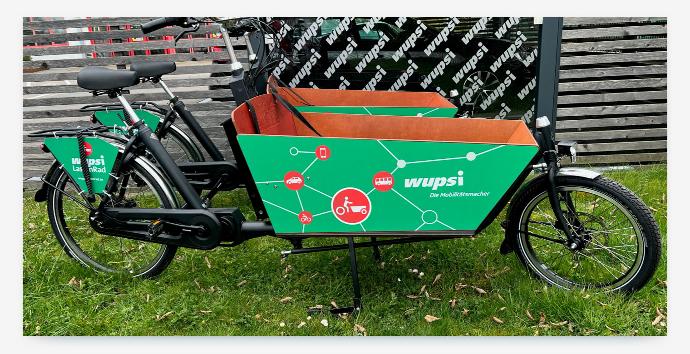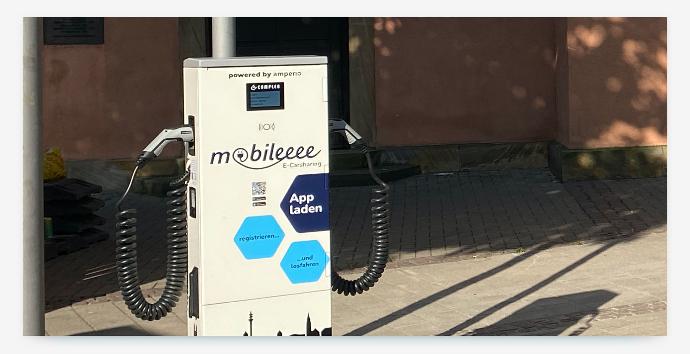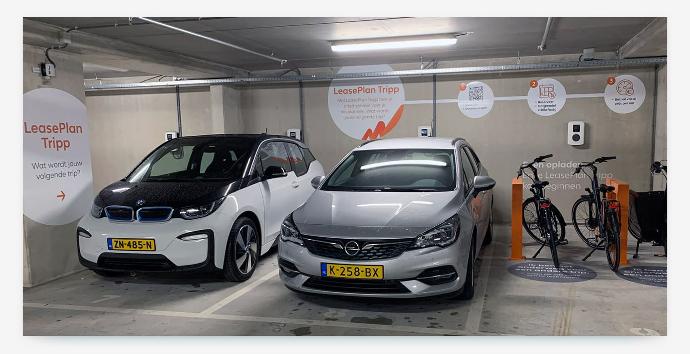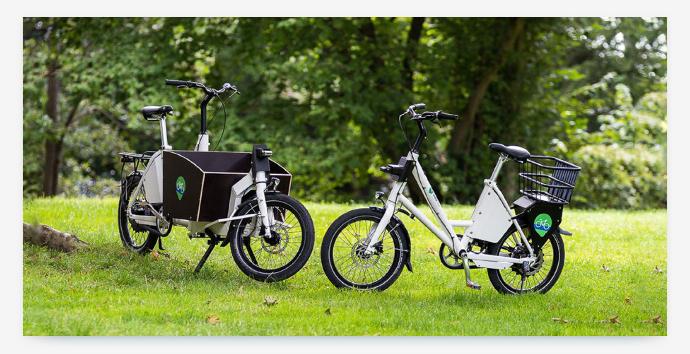There are many ways for sharing providers to create added value for all participants through strategic cooperation. The cooperation partners can come not only from your own industry, but also from other industries. Don't set any limits to your creativity when it comes to further promoting shared mobility. Find some examples and ideas for successful partnerships in this article.
Where it's worth cooperating
Good cooperations are characterized by the fact that all parties benefit from them. The cooperation partners remain legally independent companies, but decide to work together in selected business areas in order to enhance their own offerings through the respective core competencies. Cross-industry areas of cooperation include purchasing, human resources or market research.
In shared mobility, for example, providers can join forces to purchase vehicles and achieve more favorable prices due to the higher order volume. The vehicle dealer, in turn, is pleased to receive a large order. In the area of personnel, many providers of micro mobility already make use of external service providers for operational tasks such as battery changes, redistribution, cleaning, etc. This not only saves them internal personnel costs, but the service providers also usually work more efficiently and routinely due to their specialization.
And when it comes to market research, sharing providers also save money if they commission the study together with other players in shared mobility. Such a study is not cheap, but it provides valuable insights into the needs and wishes of customers.
Instead of a classic market study, perhaps an exchange of experience with supposed competitors will help you fine-tune your offering. After all, there is plenty of data and direct feedback from users available today anyway. For this, it is important to have a mindset that focuses more on networking and learning from each other than on competition. Trust that each provider addresses its own user group based on its individual orientation and fulfills targeted needs. Ultimately, you are all in the same boat and want to drive the change in mobility - each individual provider represents a single piece of the overall puzzle.
Win-win-win through targeted cooperations
In addition to the opportunities for cooperation within their own industry, there is great potential in networking between shared mobility providers and partners from the following sectors:
Public transport companies
Energy suppliers or operators of charging stations
Housing associations
Local organizations, companies and associations
Cooperate with mobility companies and focus on customers
For shared mobility to develop its full potential and contribute to a shift away from individual cars, it must be integrated into people's general mobility mix. Bikesharing and scooter sharing in particular often serve to bridge the so-called "last mile" between destination or point of departure and train or bus stations.
Local public transport should therefore not be ignored when setting up a sharing service. On the contrary, shared mobility and public transport are ideally suited to complement each other and provide users with seamless mobility. In practice, cooperation between the two parties can include joint marketing campaigns, a common mobility platform, mutual integration in apps or websites, and mobility stations at stops.

Example
The Leverkusen-based e-cargo bike rental service wupsiLastenRad is cooperating with the Rhine-Sieg Transport Authority (VRS). Users with a VRS subscription benefit from reduced rates and pay only 1 euro instead of 2 euros per 30 minutes for the standard rate. The booking is made via the wupsiLastenRad app. There, VRS customers enter their customer number and can thus take advantage of the special conditions.
The wupsiLastenRad is operated by Green Moves, a subsidiary of NATURSTROM AG. In terms of cooperation, the German company goes one step further and works with so-called station partners: The stations of the bikes are located in front of cafés or stores, which keep an eye on the condition of the bikes, report it to the operator if necessary and exchange and charge empty batteries.
Ensure charging infrastructure for e-carsharing through cooperations
Anyone who operates a sharing service with e-cars knows the importance of the available charging infrastructure. Station-based vehicles require their own charging station. Especially when new charging stations have to be built for this purpose, high costs incur in order to set them up and operate them. In the case of free-floating e-cars, a solution must be found to ensure that they are connected to a charging station in good time and may also be allowed to remain there beyond the charging period.
Cooperation with local energy suppliers or operators of charging stations is therefore valuable. While you as a provider are interested in the electricity needed for your fleet, your energy partners benefit from the marketing effect and an image boost. After all, the green image of shared mobility always rubs off a bit on energy providers who support and promote the expansion of car sharing.
How you structure such a cooperation is up to you. It is conceivable that your partner will set up the charging station and make it available to you exclusively or offer you favorable electricity rates. In return, you can offer employees or customers of the energy supplier or charging station operator special rates for your sharing service.

Example
As of this year, the e-carsharing provider mobileeee is cooperating with amperio, a specialist planning office for charging infrastructure. This company will set up, operate and maintain exclusive charging points for mobileeee's sharing offers throughout Germany. In addition to these, the charging stations will have publicly accessible charging points that contribute to refinancing. mobileeee is responsible in the cooperation for setting up the carsharing fleets that use the exclusive charging points as anchor tenants.
The four E's in mobileeee stand for easy, efficient, emission-free and electric. Since 2017, the Frankfurt-based provider has been developing and operating e-carsharing services, particularly in suburban and rural regions of Germany.
Shared Mobility instead of private parking spaces for residential buildings
As a rule, housing developers must adhere to a certain quota in terms of the number of parking spaces per residential unit when building new apartment complexes. However, many municipalities allow them to reduce this if they integrate a sharing offer for the residents instead.
This offers car sharing providers a good opportunity to cooperate with housing associations. The residents have exclusive use of the sharing vehicles on site. As a provider, you benefit from a fixed customer group. This type of cooperation has the potential to give an enormous boost to shared mobility in the private sector.
While municipalities are interested in reducing motorized individual traffic and the number of parking spaces required, the uncertainty of the availability of part-vehicles keeps many people from using them. If these are now parked in one's own underground garage or in front of the house, it makes it easier to get started with carsharing. Especially when not all residents have their own parking space anyway.

Example
LeasePlan Netherlands operates a shared mobility service called LeasePlan Tripp in several residential complexes in Amsterdam, Rotterdam and The Hague. Around 2,000 households have exclusive access to a combination of (electric) cars, e-bikes and cargo bikes. A subscription is offered for frequent users but is not required. Residents can download the free app and book the appropriate type of vehicle on their needs – around the clock. There are no subscription fees and the payment is only for the actual use of the vehicle. They don't have to worry about aspects such as insurance, maintenance and cleaning, because LeasePlan takes care of that. Residents benefit from worry-free mobility out of their own parking garage.
LeasePlan is a specialist in car leasing and fleet management. Under the mission "What's next", LeasePlan aims to help shape the future of sustainable mobility and find new ways of getting from A to B. With LeasePlan Tripp they set a new standard for shared mobility around residential complexes in response to the inconvenience and costs of having your own car in the city.
Anchor tenants ensure occupancy
A final example of promising cooperations are local companies, organizations and associations. Offer them individual access to your services, for example via exclusively usable vehicles or special rates. In this way, you bind them as anchor tenants in the long term and benefit from a secure utilization rate and thus a regular income.
After all, many larger organizations have a constant need for company travel. By using an existing sharing service, they can save on an internal fleet or company cars for employees and instead have flexible access to the vehicles when they are needed. With the help of the contingent feature of the MOQO platform, employees can be offered a budget for private trips even without their own company car.
Another plus point for providers: Large companies and municipal institutions usually enjoy a reputation of trust in their region. If the employees of these organizations drive around in your vehicles, this not only brings you revenue, but also a marketing effect.

Example
Velocity Mobility, a provider of electric micromobility, offers companies the opportunity to set up their own mobility station with exclusive parking spaces at their own location. In this way, employees can ride their pedelec to work or do a little shopping during their lunch break. Thus, companies not only contribute to environmental protection and health promotion for their employees, but can also save money. The mobility stations enable them to reduce the number of parking spaces and hence mobility costs.
Velocity Mobility offers a station-based and automated rental system for electric micromobility. The pioneer project in Aachen, Germany, has been in existence since 2014 - since then, projects have been added in Ravensburg, Düsseldorf, Siegerland and Barnim, with more to follow.

Together you are stronger than alone
As it has become clear, there are really only winners in shared mobility cooperations. Transport service providers fulfill their mission to offer customers the best possible mobility, energy suppliers find customers for their electricity and use the cooperation for advertising purposes, housing associations offer residents attractive offers and may have to build fewer parking spaces, and companies find a modern replacement for an in-house fleet.
And ultimately, the end users are at the center of all these cooperation opportunities. All those involved have set themselves the goal of driving forward the mobility revolution and making individual mobility as simple, efficient and attractive as possible. Due to the positive effects on the local traffic situation, you may also be able to rely on the support and goodwill of your local government.
Last but not least: Get creative! Who you want to cooperate with and in what way is up to you and, of course, your desired partner. If the partnership offers benefits to all involved and promotes shared mobility along the way, why not?




